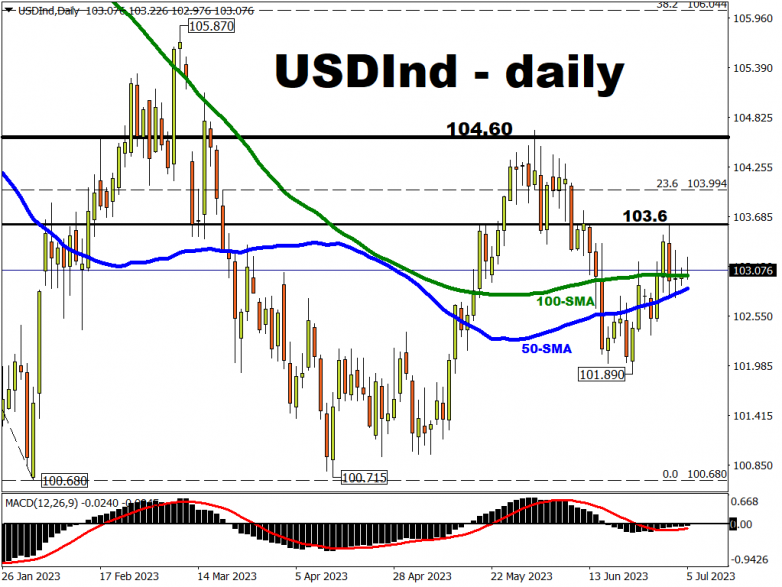It’s a shortened week for US markets with the Independence Day holiday yesterday meaning reduced liquidity and volumes to kick off the first few days of the second half of 2023.
But that doesn’t mean there isn’t a lot going on.
This week, we’re due to receive important data to inform the FOMC ahead of its rate decision and meeting in the last week of July.
Later today sees the FOMC minutes which will shed some light on the scope for more rate hikes.
We got a glimpse of the health of the economy with Monday’s ISM manufacturing index which came in at 46.0, below consensus expectations. That means the print was in contractionary territory (i.e. below 50) for the eighth straight month and touched its lowest level since May 2020.
We note that this economic data has been a historically accurate leading indicator of GDP and it currently points to a substantial slowdown. Markets will zero in on the ISM services figures released on Thursday with expectations of another headline print between 50 and 52 for the fourth month in a row.
The key question is whether this major part of the economy follows the downtrend in manufacturing into contraction territory or if it can take up the slack and keep employment buoyant.
Jobs data will also be in focus with the JOLTs and timelier initial jobless claims data preceding the monthly marquee non-farm payrolls release on Friday.
The former, vacancy data can still be influential on price action as last month's data for April, for example, saw an upside surprise which generated a hawkish market reaction. It will also be important to note any sustained increase in the level of claims as it would likely signal a deceleration in monthly job gains.
With another 25bp Fed rate hike baked in by markets at the late July meeting, it seems we would have to see an outsized disappointment in NFP for those odds to move to the FOMC standing pat in a few week’s time.
The dollar has recently found a bid with bond markets getting more hawkish.
The USD Index may rise further on a very strong labour market report, which in turn pushes the odds higher of another quarter-point rate rise in September or November from the current 34%.
The USDInd may then be pushed back towards the recent cycle high at 103.60.
However, a significantly weaker-than-expected NFP on Friday may drag USD Index below its 50-day simple moving average (SMA).


